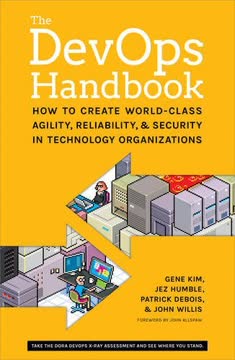Key Takeaways
1. Zero Trust Networks: A Paradigm Shift in Cybersecurity
The zero trust model turns this diagram inside out.
Fundamental shift in security. Zero trust networks represent a revolutionary approach to cybersecurity, abandoning the traditional perimeter-based model. Instead of assuming trust within a network, zero trust assumes no trust by default, regardless of whether a user or device is inside or outside the corporate network. This model requires:
- Authentication and authorization for every network request
- Encryption of all data in transit
- Continuous monitoring and validation of security posture
Key principles:
- The network is always assumed to be hostile
- External and internal threats exist at all times
- Network locality is not sufficient for deciding trust
- Every device, user, and network flow is authenticated and authorized
- Policies must be dynamic and calculated from multiple data sources
2. The Perimeter Model is Dead: Embrace the Zero Trust Architecture
Switching to a trust score model for policies isn't without its downsides.
Evolution of network security. The traditional perimeter model, which relied on firewalls and VPNs to create a "secure" internal network, is no longer sufficient in today's complex and distributed IT environments. Zero trust architecture addresses the limitations of the perimeter model by:
- Eliminating the concept of a trusted internal network
- Implementing strong authentication and authorization for all resources
- Applying micro-segmentation to limit lateral movement
- Using encryption to protect data in transit and at rest
Benefits of zero trust:
- Improved security posture against both external and internal threats
- Better visibility and control over network traffic
- Reduced attack surface and limited blast radius in case of a breach
- Simplified network management and reduced dependence on VPNs
3. Identity and Access Management: The Cornerstone of Zero Trust
Authentication comes with another interesting property.
Identity is crucial. In a zero trust model, strong identity and access management (IAM) is fundamental. Every user, device, and application must have a verifiable identity, and access decisions are made based on these identities and associated attributes.
Key components of IAM in zero trust:
- Multi-factor authentication (MFA) for all users
- Fine-grained access controls based on user roles and attributes
- Continuous authentication and authorization
- Identity federation and single sign-on (SSO) capabilities
- Dynamic policy enforcement based on real-time risk assessment
Trust scoring: Implement a dynamic trust scoring system that considers factors such as:
- User behavior patterns
- Device health and compliance
- Location and time of access
- Sensitivity of the requested resource
4. Device Trust: Securing the Endpoints in a Zero Trust Network
Trusting devices in a zero trust network is extremely critical; it's also an exceedingly difficult problem.
Endpoint security is vital. In a zero trust network, devices are potential entry points for attackers and must be thoroughly secured and continuously monitored. Key aspects of device trust include:
- Strong device authentication using certificates or hardware-backed credentials
- Continuous assessment of device health and compliance
- Automated patching and updates
- Endpoint detection and response (EDR) capabilities
- Device isolation and remote wipe capabilities
Implementing device trust:
- Establish a robust device inventory and management system
- Implement a secure device onboarding process
- Use hardware security modules (HSM) or Trusted Platform Modules (TPM) when possible
- Regularly rotate device credentials and certificates
- Monitor device behavior for anomalies and potential compromises
5. Application Security: Building Trust from Code to Execution
Trusting the device is just half of the story. One must also trust the code and the programmers who wrote it.
Secure the entire pipeline. Application security in a zero trust environment extends beyond just securing the running application. It encompasses the entire software development lifecycle and runtime environment. Key considerations include:
- Secure coding practices and developer training
- Regular code reviews and static analysis
- Vulnerability scanning and penetration testing
- Runtime application self-protection (RASP)
- Continuous monitoring and logging of application behavior
Application trust measures:
- Use code signing to ensure integrity of deployed applications
- Implement application-level encryption and access controls
- Employ micro-segmentation to limit application-to-application communication
- Utilize container security and orchestration tools for containerized applications
- Implement just-in-time (JIT) and just-enough-access (JEA) principles for application privileges
6. Network Traffic Security: Encryption, Authentication, and Authorization
Encryption brings confidentiality, but it can also be an occasional nuisance.
Secure all communications. In a zero trust network, all traffic must be encrypted, authenticated, and authorized, regardless of its origin or destination. This approach ensures data confidentiality and integrity while preventing unauthorized access and lateral movement.
Key aspects of network traffic security:
- Use of strong encryption protocols (e.g., TLS 1.3, IPsec)
- Mutual authentication for all network connections
- Network segmentation and micro-segmentation
- Software-defined perimeter (SDP) or black cloud architecture
- Continuous monitoring and analysis of network traffic patterns
Implementation strategies:
- Deploy a public key infrastructure (PKI) for managing certificates
- Implement protocol-aware proxies for fine-grained access control
- Use network encryption gateways for legacy systems
- Employ network detection and response (NDR) tools for threat detection
- Implement DNS security measures (DNSSEC, DoH, DoT)
7. Implementing Zero Trust: A Gradual and Pragmatic Approach
Zero trust advocates for a control plane that injects the results of authorization decisions into the network to allow trusted communication to occur.
Phased implementation. Transitioning to a zero trust model is a significant undertaking that requires careful planning and execution. A gradual, phased approach allows organizations to realize benefits while minimizing disruption to existing operations.
Steps for implementing zero trust:
- Assess current security posture and identify gaps
- Define zero trust objectives and priorities
- Start with a pilot project or specific use case
- Implement strong identity and access management
- Enhance device security and management
- Secure applications and workloads
- Implement network segmentation and traffic encryption
- Deploy monitoring and analytics capabilities
- Continuously refine and expand the zero trust model
Key considerations:
- Involve stakeholders from across the organization
- Focus on user experience to ensure adoption
- Leverage existing security investments where possible
- Plan for integration with cloud and hybrid environments
- Develop metrics to measure the effectiveness of zero trust implementation
8. The Human Element: Social Engineering and Physical Security in Zero Trust
Social engineering attacks, which trick trusted humans into taking action on a trusted device, are still very much a concern in zero trust networks.
Human vulnerabilities persist. While zero trust significantly improves technical security, human factors remain a potential weak point. Social engineering attacks, insider threats, and physical security risks must be addressed alongside technological controls.
Strategies to address human-centric risks:
- Comprehensive security awareness training for all employees
- Simulated phishing and social engineering exercises
- Clear policies and procedures for handling sensitive information
- Physical security measures (e.g., access controls, surveillance)
- Background checks and periodic security clearance reviews
- Insider threat detection and prevention programs
Balancing security and usability:
- Implement user-friendly security tools and processes
- Provide clear explanations for security measures
- Offer multiple authentication options to suit different user needs
- Use behavioral analytics to detect anomalies without burdening users
- Regularly gather feedback and adjust policies to improve user experience
Human-centric security measures are crucial to complement the technological aspects of zero trust, creating a holistic and resilient security posture.
Last updated:
FAQ
What's Zero Trust Networks about?
- Security Paradigm Shift: Zero Trust Networks by Evan Gilman introduces a security model that assumes no trust in any network, internal or external, requiring verification for every access request.
- Framework for Secure Systems: The book provides a comprehensive framework for designing secure systems in untrusted environments, moving away from traditional security assumptions.
- Holistic Approach: It covers user, device, and application trust, offering strategies to manage these elements within a zero trust architecture.
Why should I read Zero Trust Networks?
- Modern Threats Addressed: The book is crucial for understanding and combating cybersecurity threats that exploit traditional perimeter defenses.
- Practical Guidance: It offers actionable design patterns and considerations for real-world systems, valuable for network engineers and security professionals.
- Expert Insights: Authors Evan Gilman and Doug Barth share their extensive experience with zero trust principles across various organizations.
What are the key takeaways of Zero Trust Networks?
- Assume Hostility: The network is always assumed to be hostile, shifting focus from perimeter security to rigorous verification of every access request.
- Dynamic Policies: Emphasizes the need for policies that adapt based on real-time data and context, rather than static rules.
- Trust Management: Introduces trust scores based on user and device behavior for nuanced access control decisions.
What is the zero trust model as defined in Zero Trust Networks?
- No Implicit Trust: Operates on the principle that no entity should be trusted by default; every access request must be authenticated and authorized.
- Continuous Verification: Requires ongoing verification of user identities and device integrity to ensure legitimate access.
- Dynamic Security Policies: Policies are dynamic, based on multiple data sources, allowing for fine-grained access control.
How does Zero Trust Networks define a zero trust network?
- Five Fundamental Assertions: The network is hostile, threats exist at all times, locality is not sufficient for trust, every access must be authenticated, and policies must be dynamic.
- Contrast with Traditional Models: Focuses on securing every interaction and minimizing trust assumptions, unlike traditional perimeter defenses.
- Holistic Security Approach: Integrates security into core operations rather than treating it as an add-on.
How does Zero Trust Networks address identity management?
- Centralized Identity Provider: Advocates for a centralized system to manage user authentication and authorization, ensuring consistent identity verification.
- Multifactor Authentication: Emphasizes the importance of MFA to strengthen identity security and reduce unauthorized access risks.
- Regular Audits and Updates: Suggests regular audits and updates to identity management practices to adapt to new threats.
What are the roles of the control plane and data plane in a zero trust network?
- Control Plane: Manages access requests, enforces policies, and maintains the network's security posture, dynamically configuring the data plane.
- Data Plane: Handles actual traffic and enforces control plane decisions, ensuring only authorized requests are processed.
- Separation of Responsibilities: Minimizes lateral movement risk, with the control plane continuously monitoring and adjusting access.
How does Zero Trust Networks suggest managing trust in users?
- Separate User and Device Trust: User trust should be managed independently from device trust due to different security implications.
- Identity Authority: Establishing a centralized identity authority is crucial for validating user identities and managing access rights.
- Adaptive Authentication: Advocates for methods that adjust based on trust scores and context, enhancing security without compromising user experience.
What are the best practices for implementing zero trust as outlined in Zero Trust Networks?
- Start with a Risk Assessment: Conduct a thorough assessment to identify critical assets and vulnerabilities, prioritizing focus areas.
- Implement Least Privilege Access: Ensures users have only necessary permissions, minimizing potential damage from compromised accounts.
- Continuous Monitoring and Response: Establish mechanisms to detect and respond to suspicious activities in real-time, maintaining network integrity.
How does Zero Trust Networks address the challenges of legacy systems?
- Authentication Proxies: Suggests using proxies to bridge legacy systems with zero trust principles, allowing secure access without infrastructure compromise.
- Incremental Adoption: Encourages gradual integration of zero trust principles with legacy systems, enhancing security measures over time.
- Secure Introduction Focus: Highlights the importance of secure introduction processes for legacy devices, ensuring authenticated and trusted connections.
What are the challenges of transitioning to a zero trust network mentioned in Zero Trust Networks?
- Cultural Resistance: Transition may face resistance from employees used to traditional security practices, requiring effective communication and training.
- Complexity of Implementation: Involves reconfiguring systems and processes, posing technical challenges that organizations must prepare for.
- Resource Allocation: Requires substantial resources, including time, personnel, and budget, necessitating careful planning to avoid operational disruption.
What are the potential attack vectors against a zero trust network as discussed in Zero Trust Networks?
- Identity Theft: Compromised user or device identities can bypass security measures, making identity protection crucial.
- Distributed Denial of Service (DDoS): Networks can still be vulnerable to DDoS attacks, requiring additional mitigation measures.
- Social Engineering: Exploits human vulnerabilities, necessitating training and awareness programs to recognize and respond to threats.
Review Summary
Zero Trust Networks receives mostly positive reviews, with an average rating of 4.02/5. Readers praise its comprehensive overview of zero trust concepts, though some find it too theoretical. The book is lauded for explaining the philosophy behind zero trust networks and comparing them to traditional security models. Critics note a lack of practical implementation details and suggest it may be most relevant for large organizations. Overall, it's considered a valuable introduction to an emerging security paradigm, despite some limitations in applicability.
Similar Books










Download PDF
Download EPUB
.epub digital book format is ideal for reading ebooks on phones, tablets, and e-readers.




